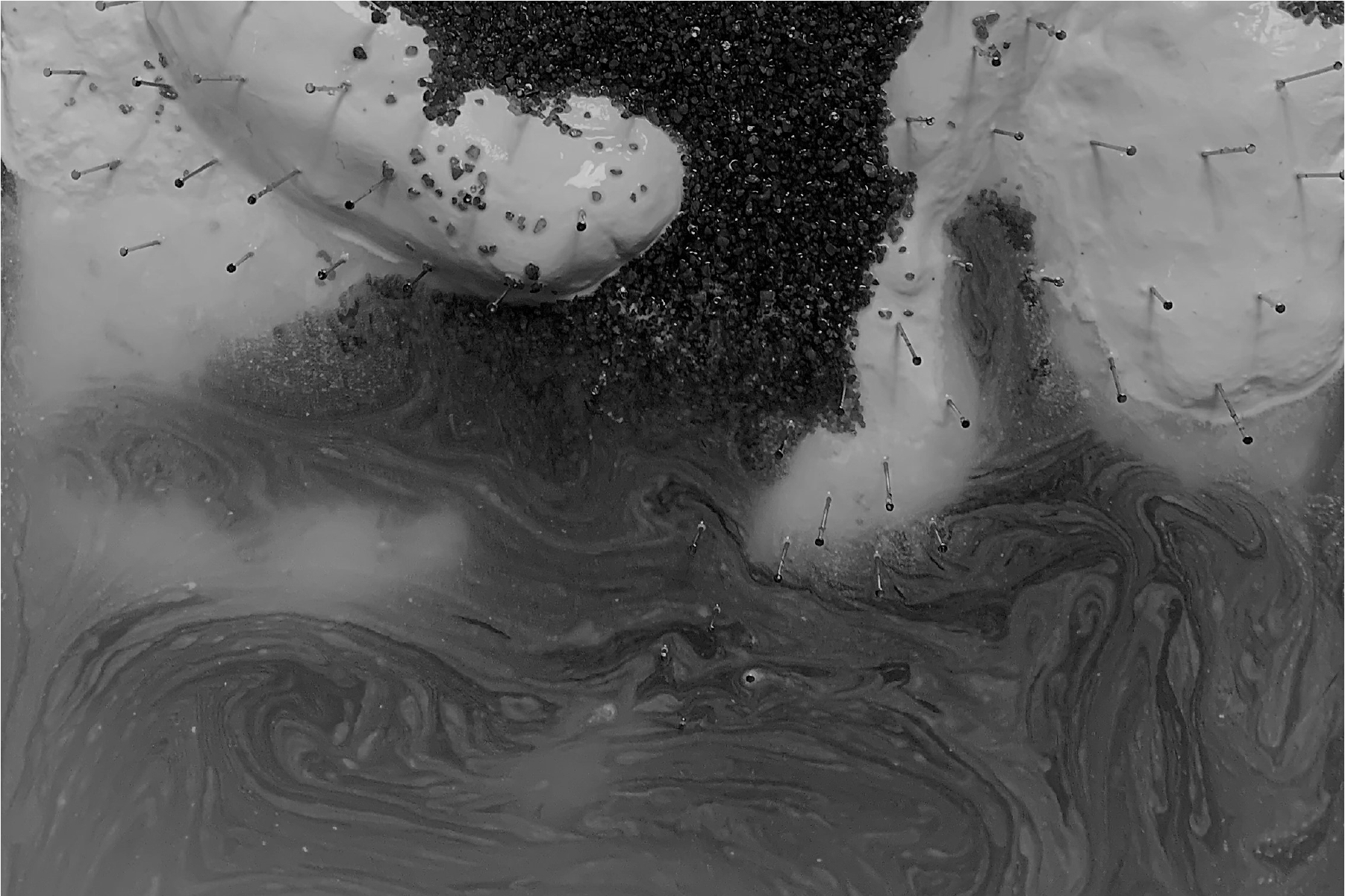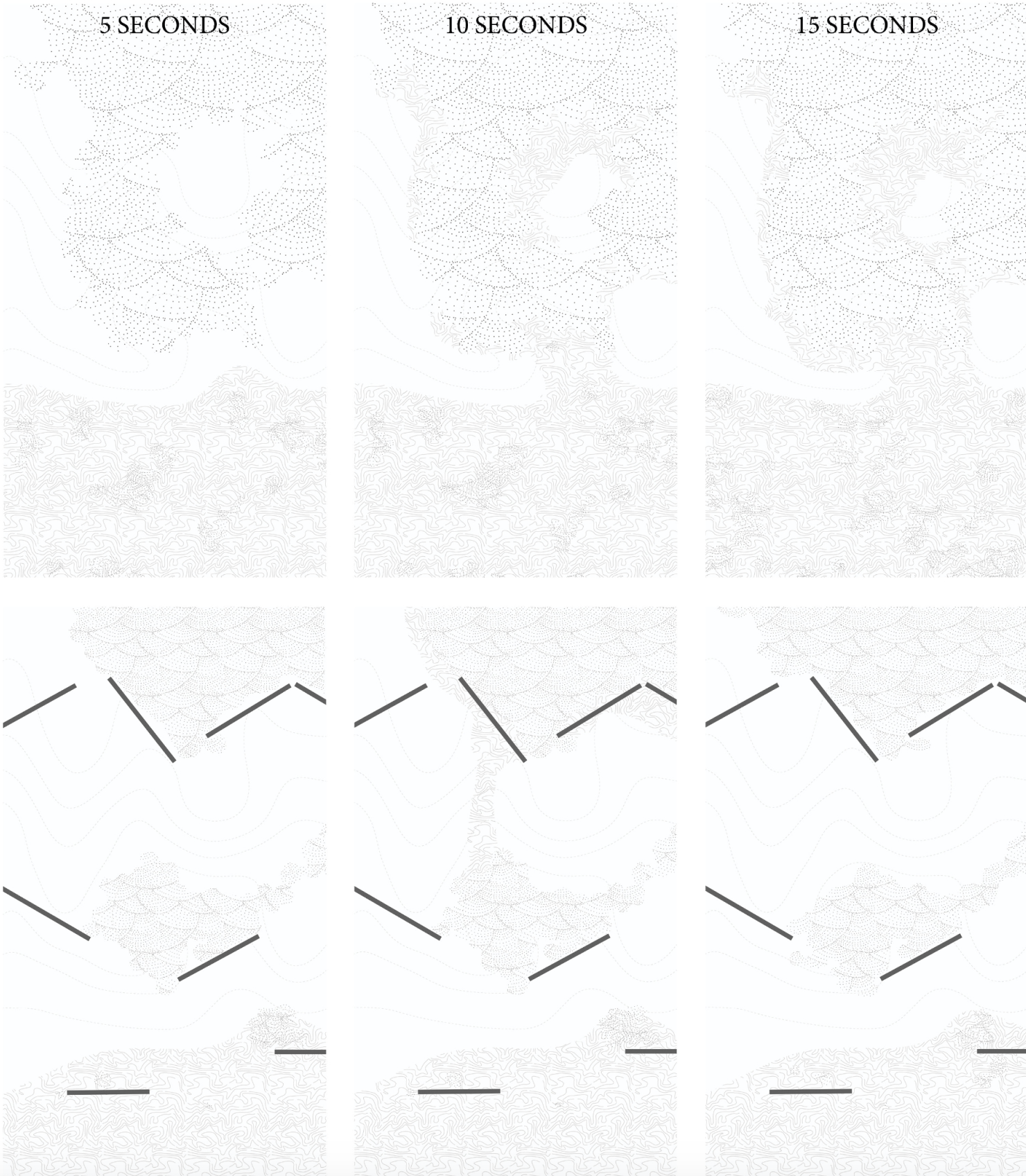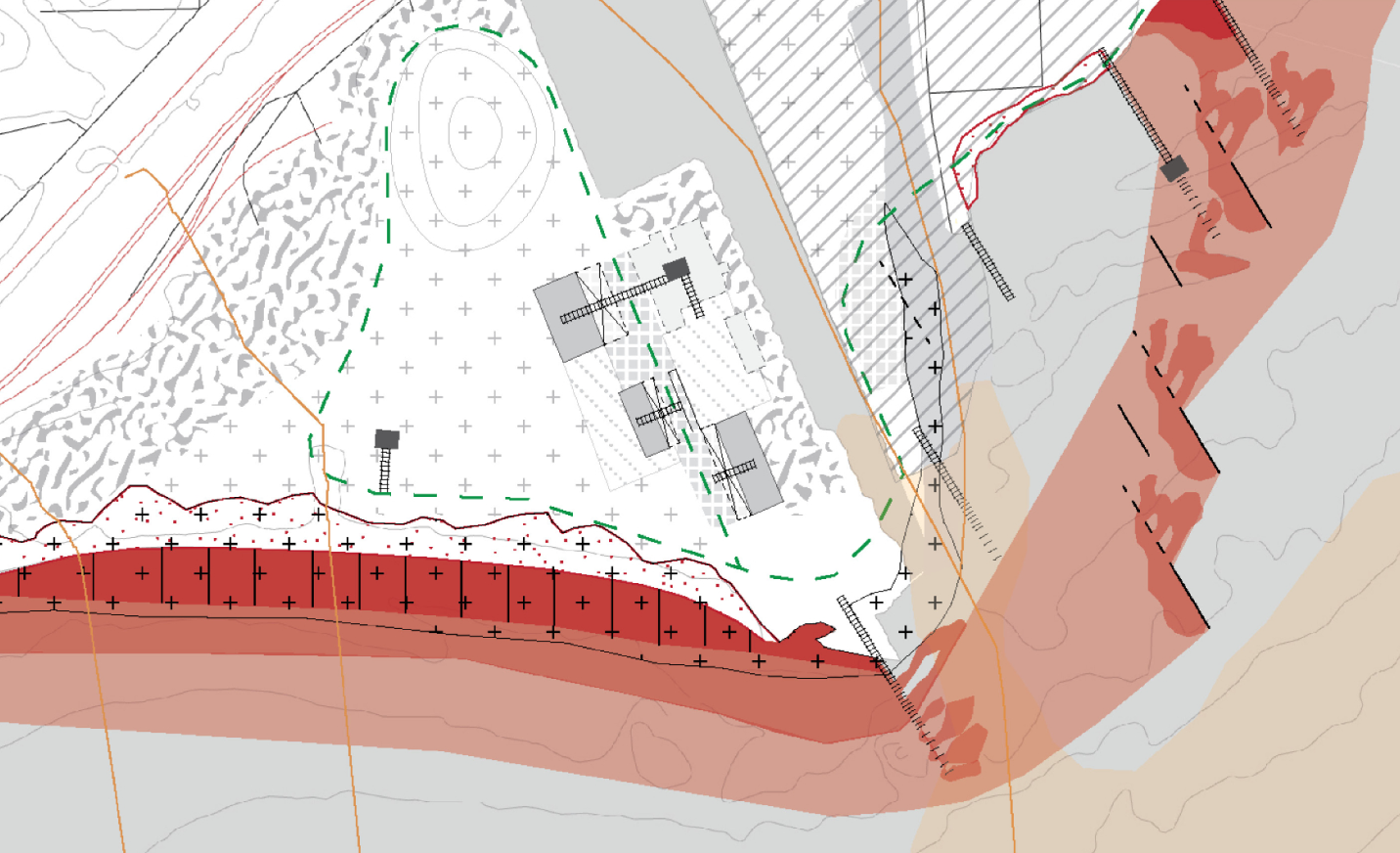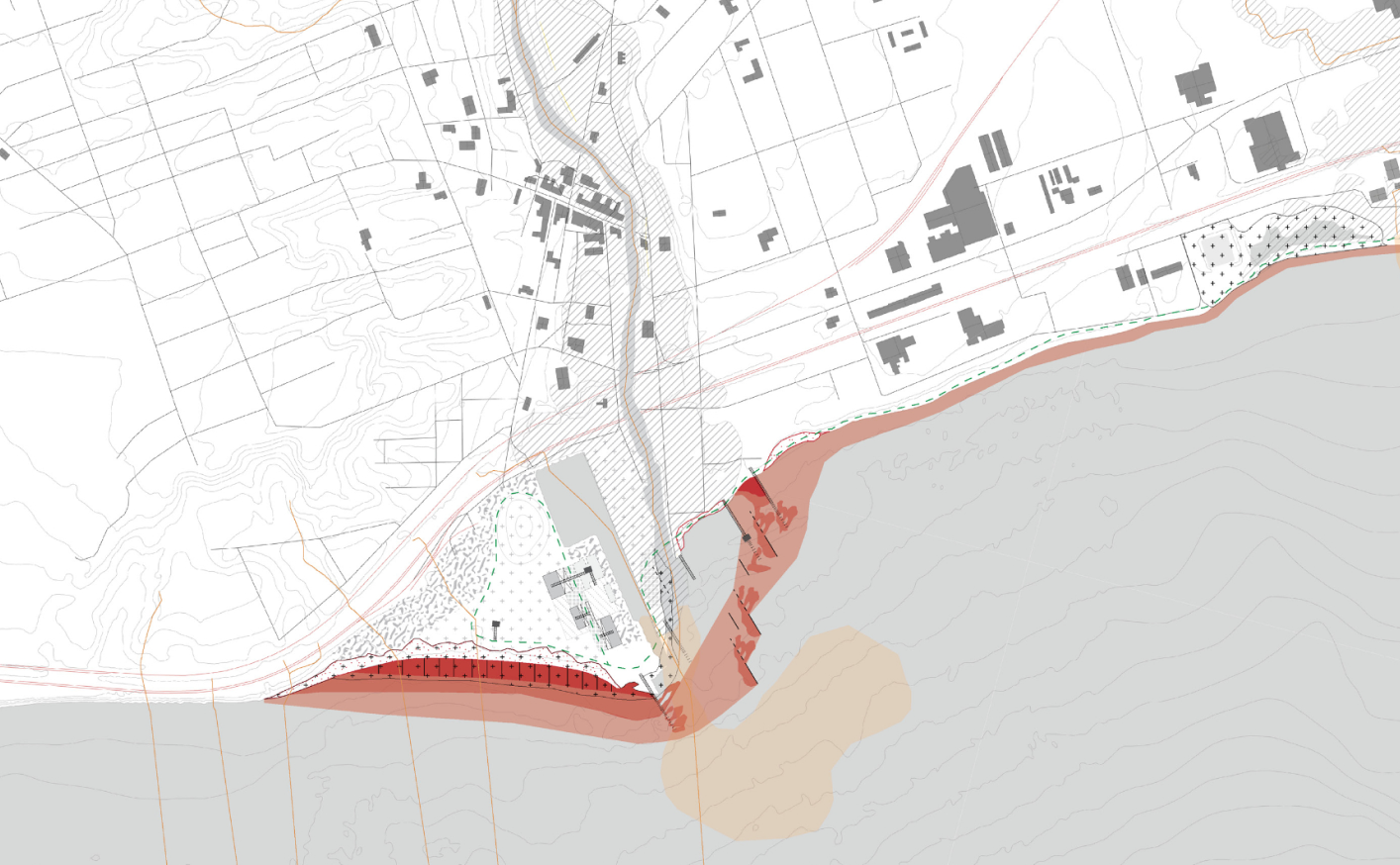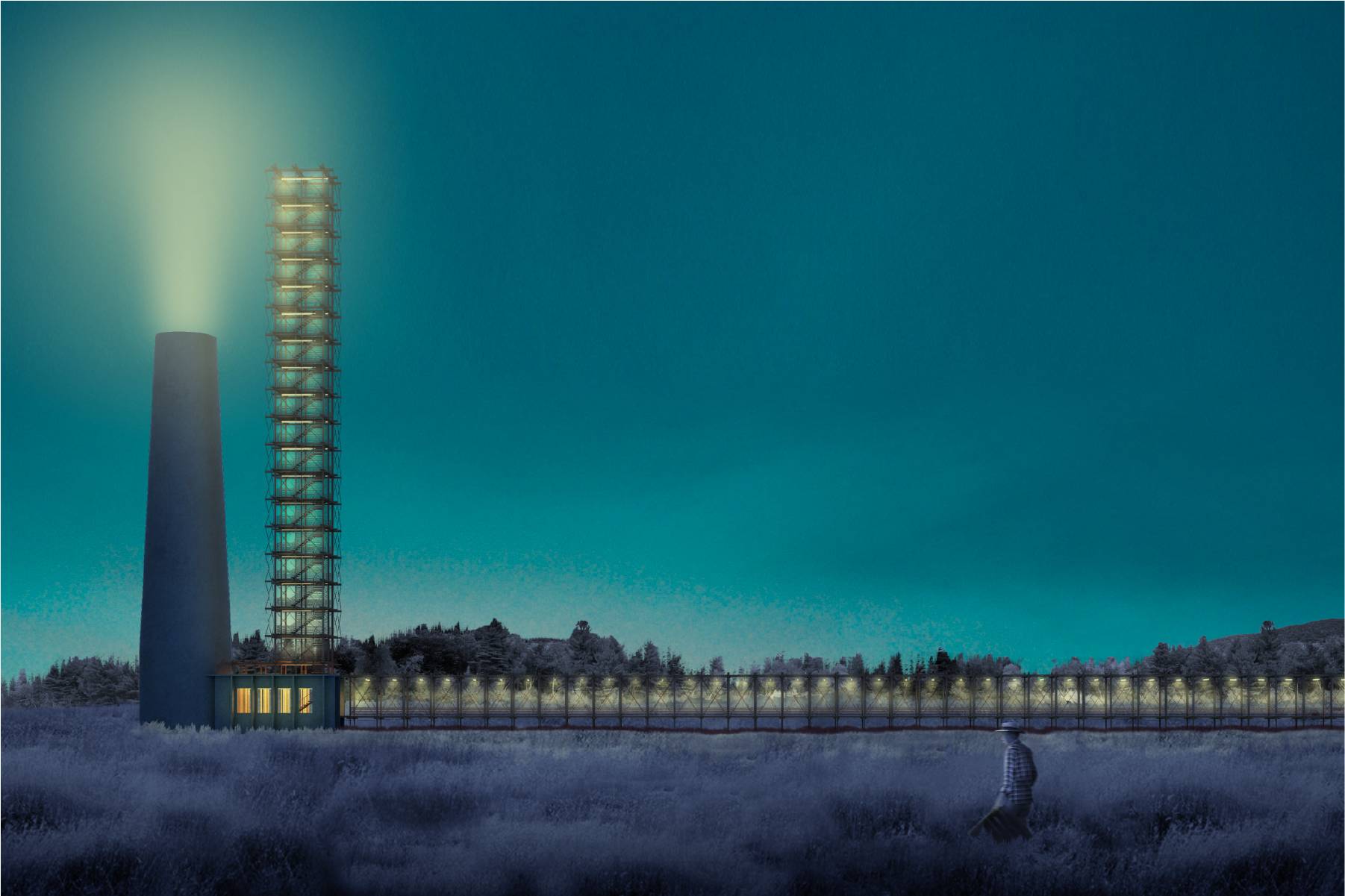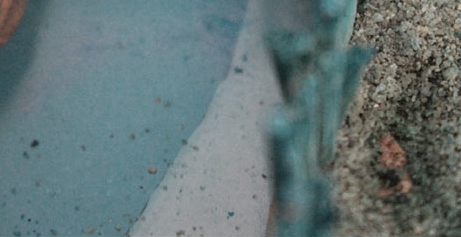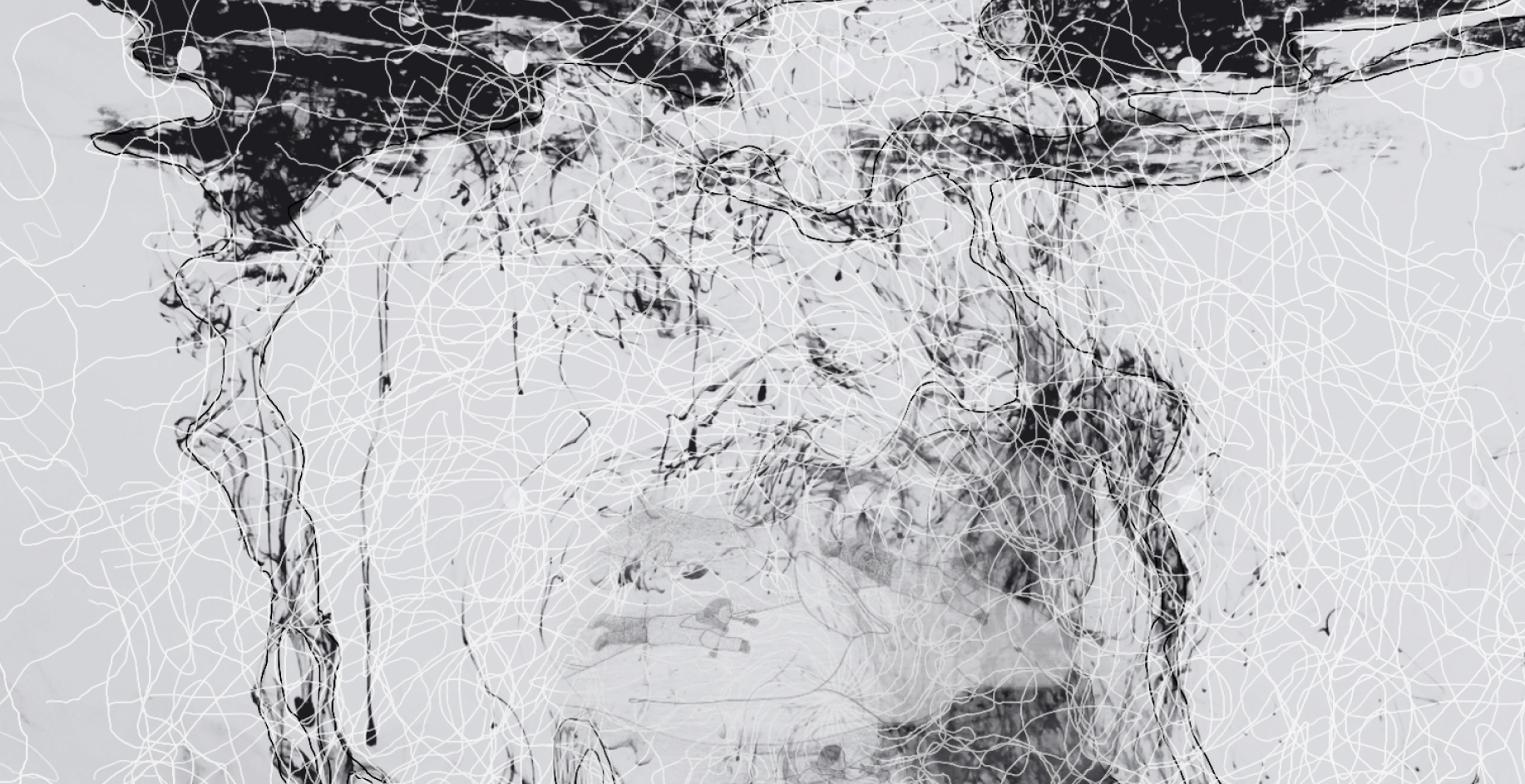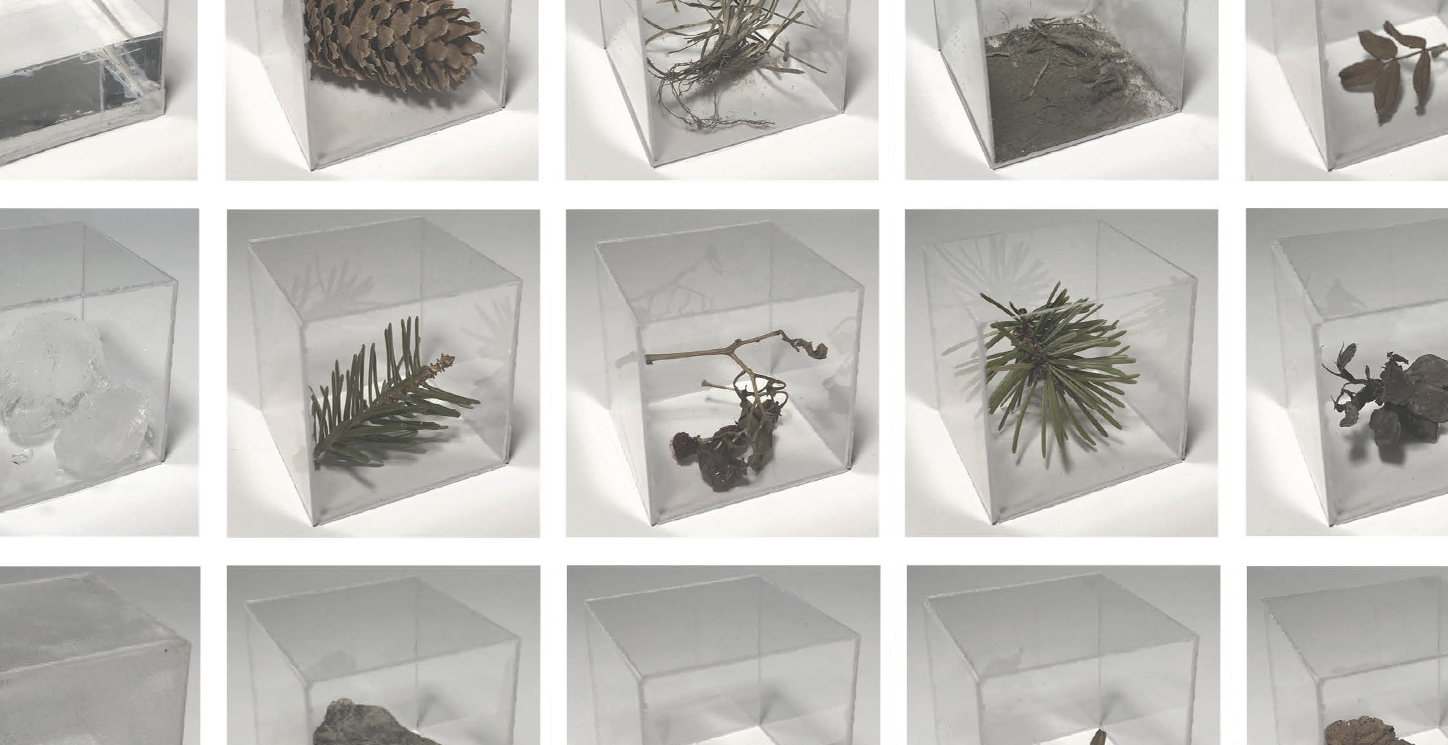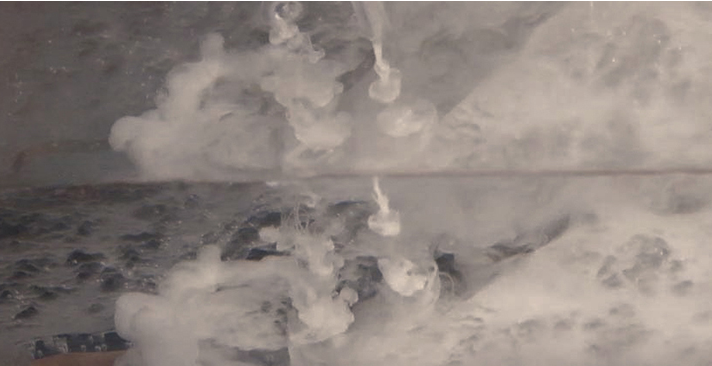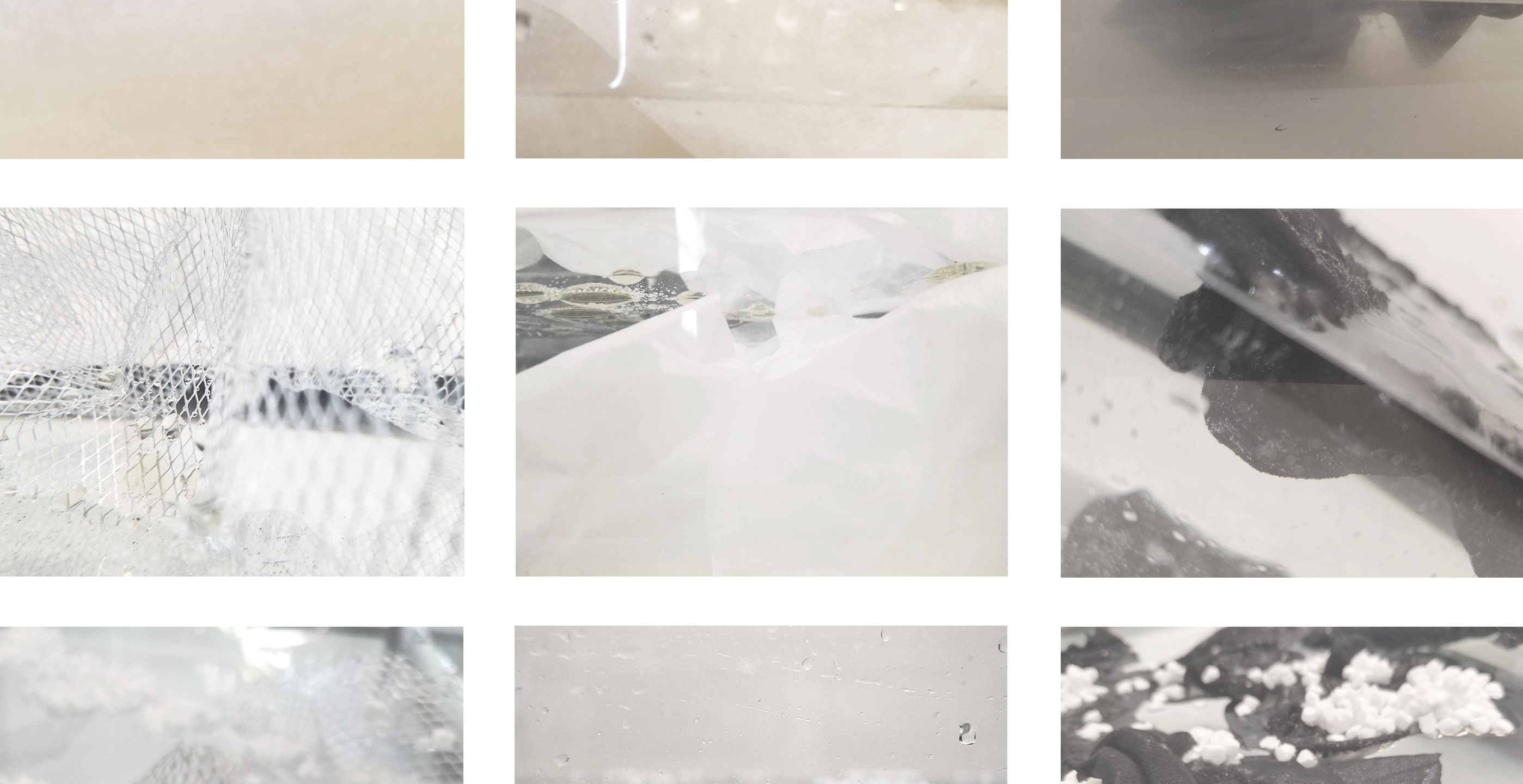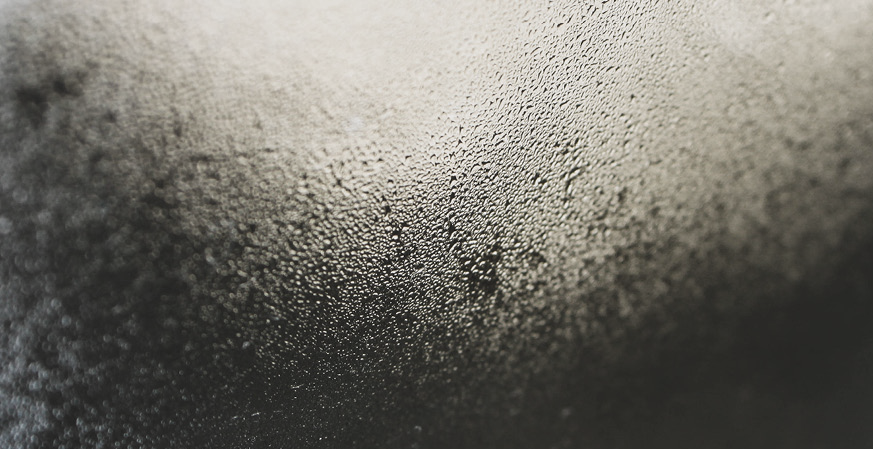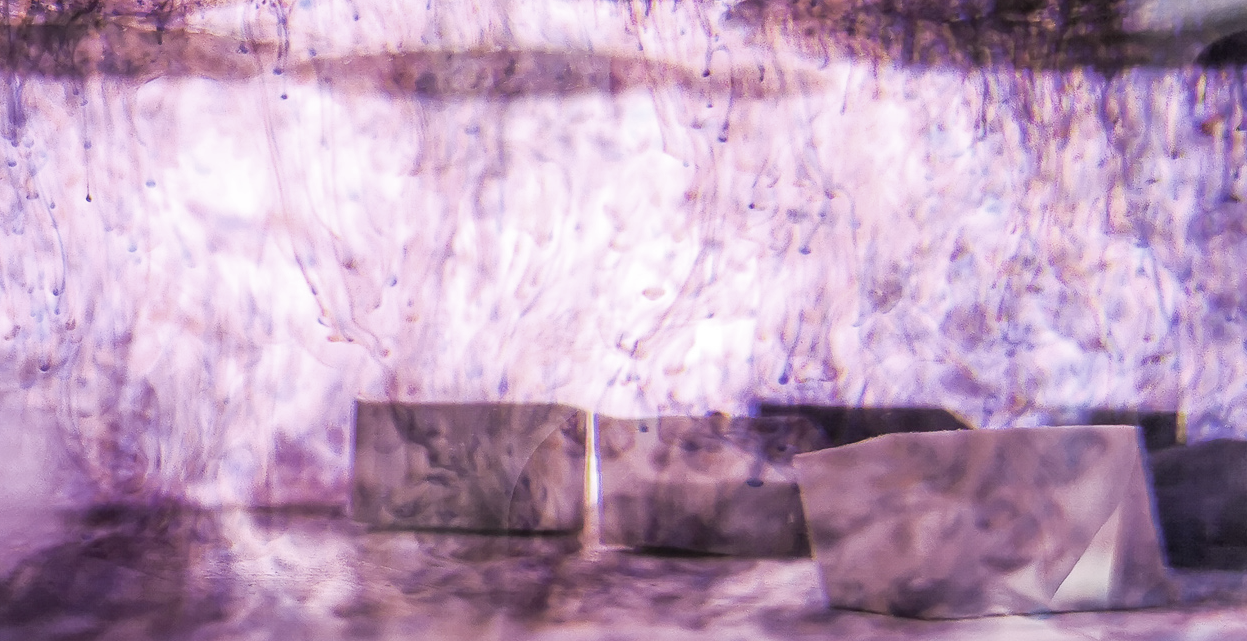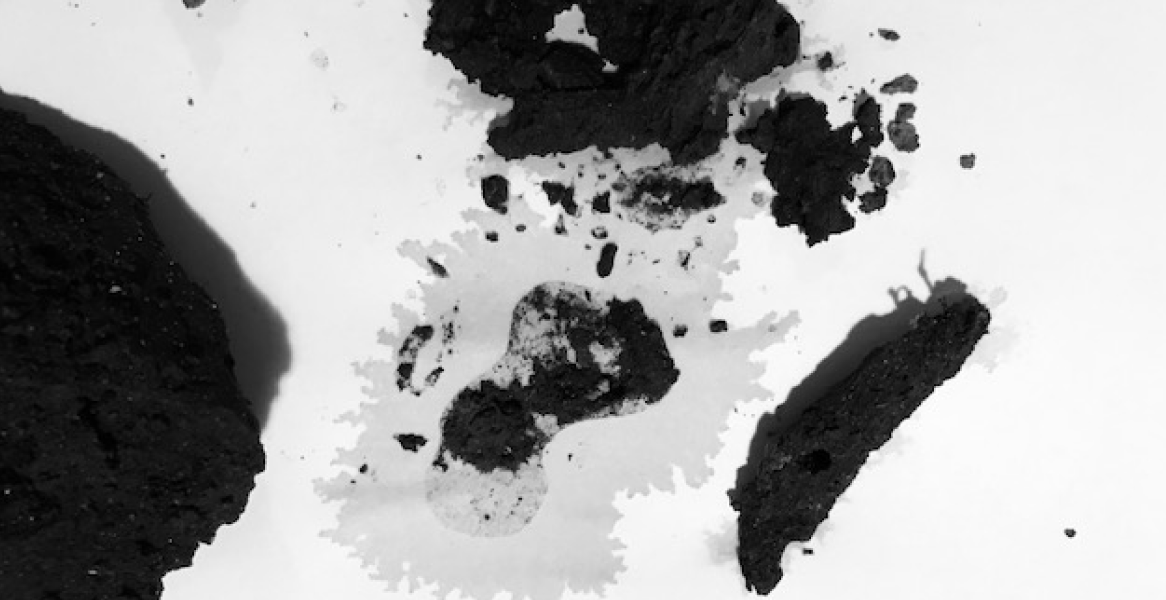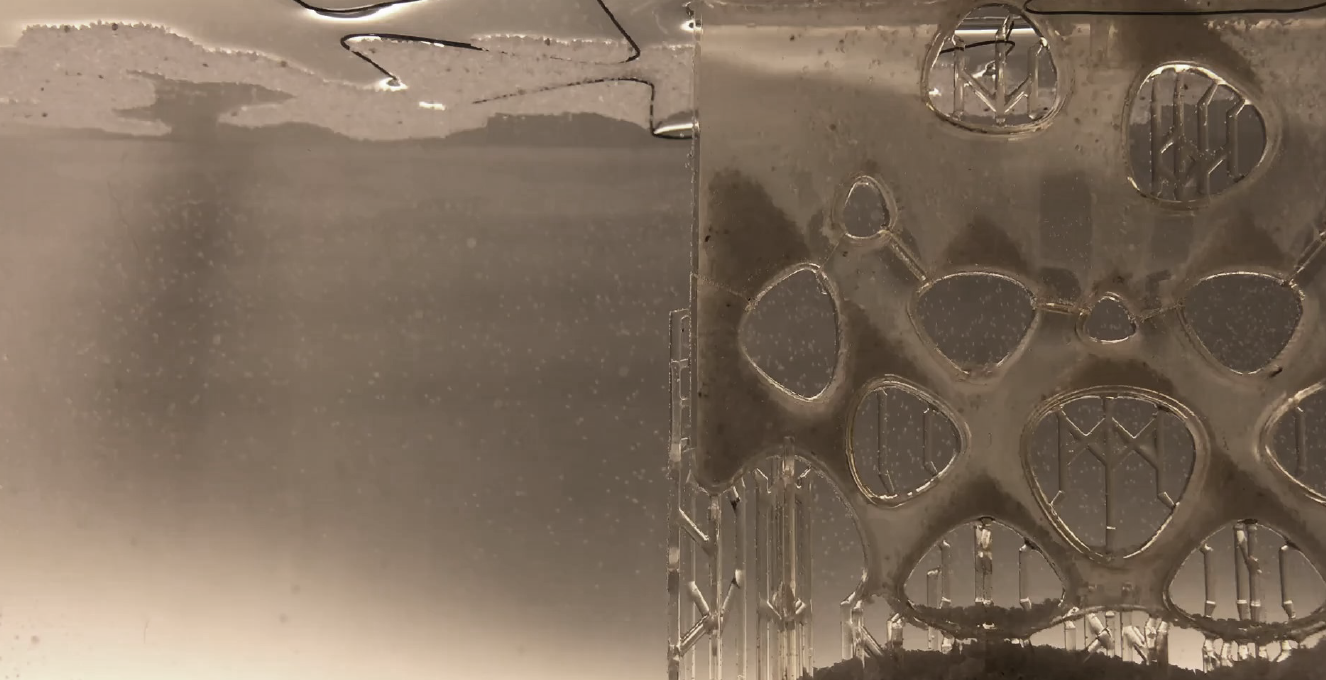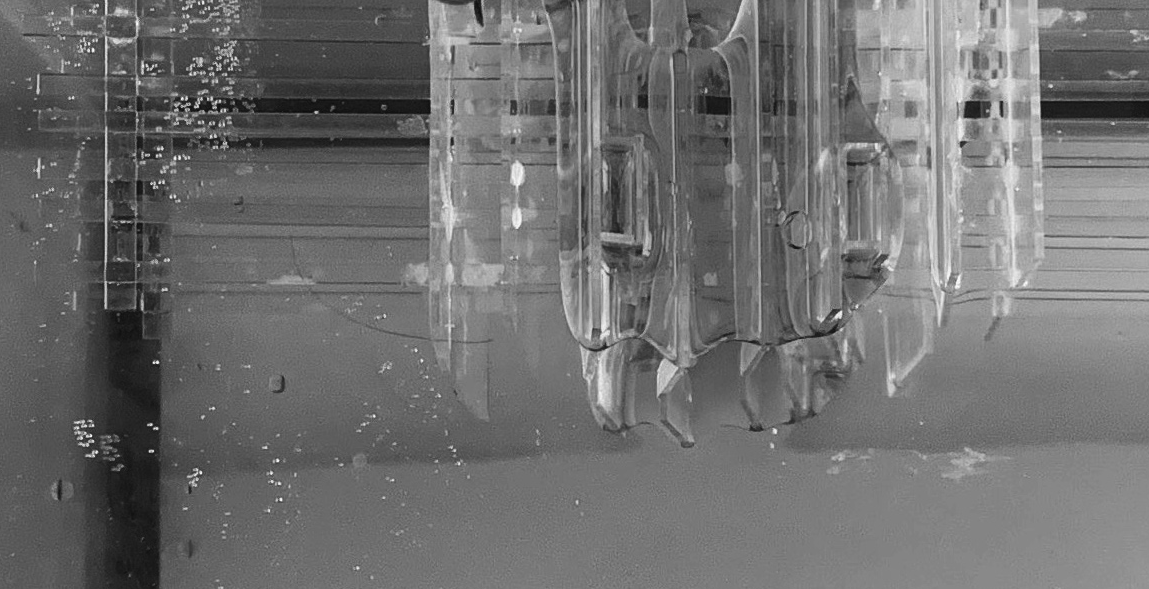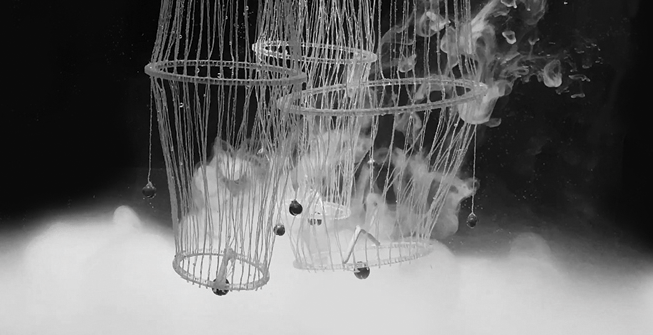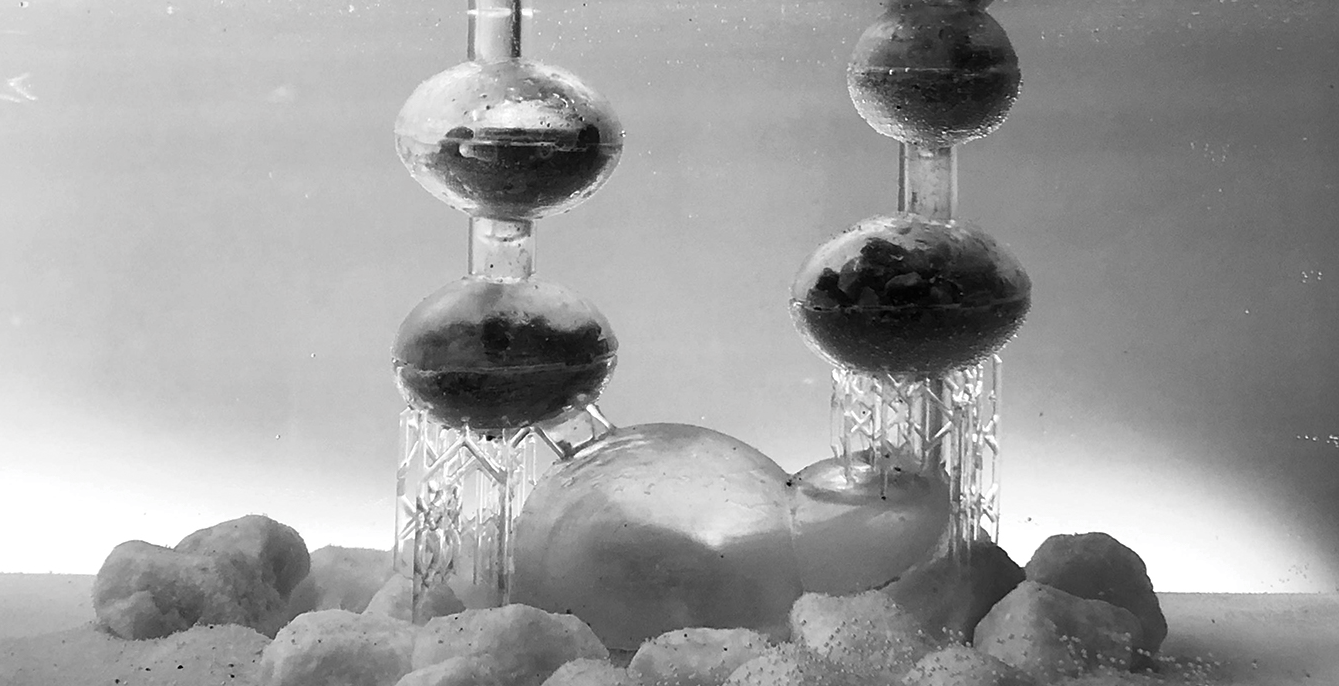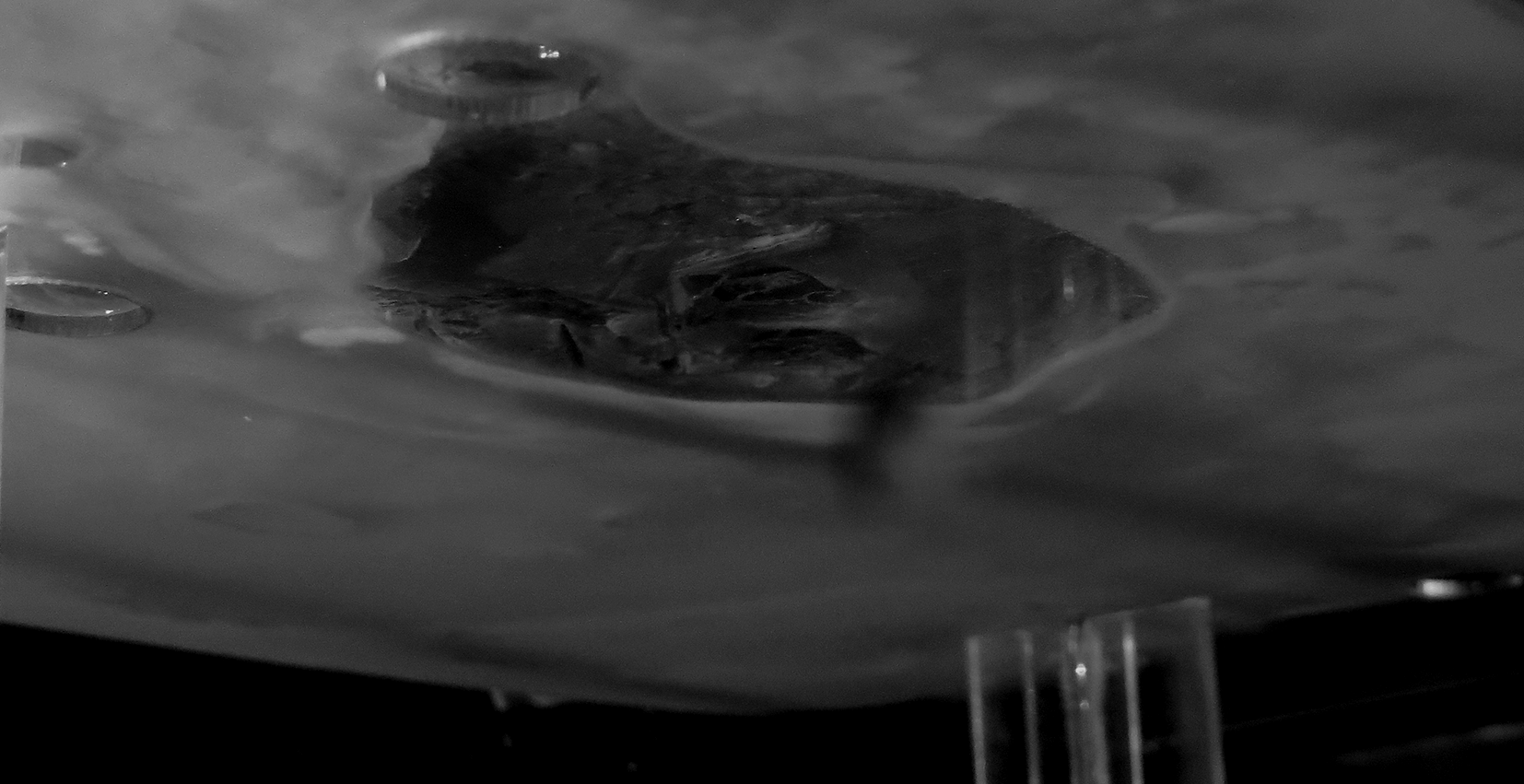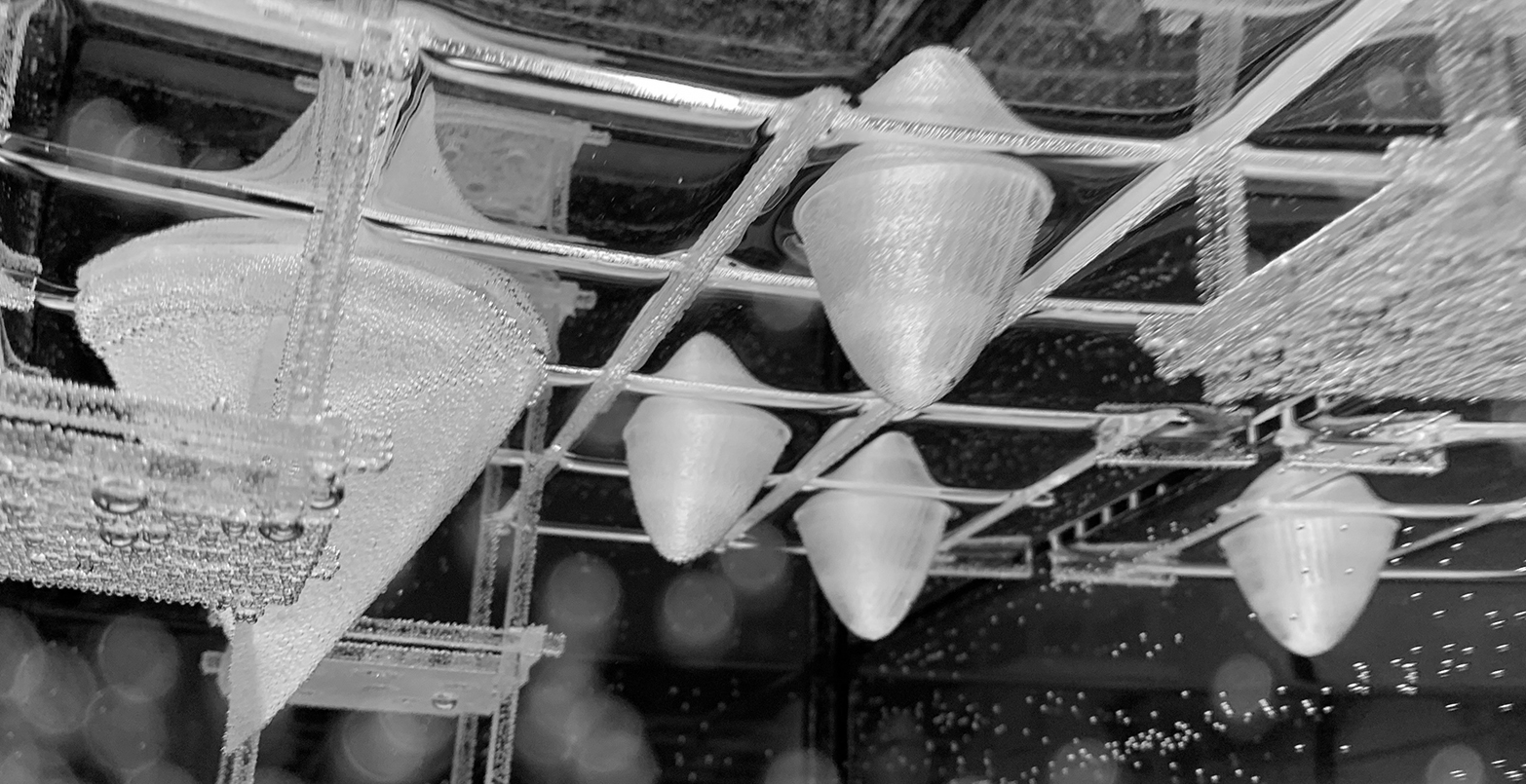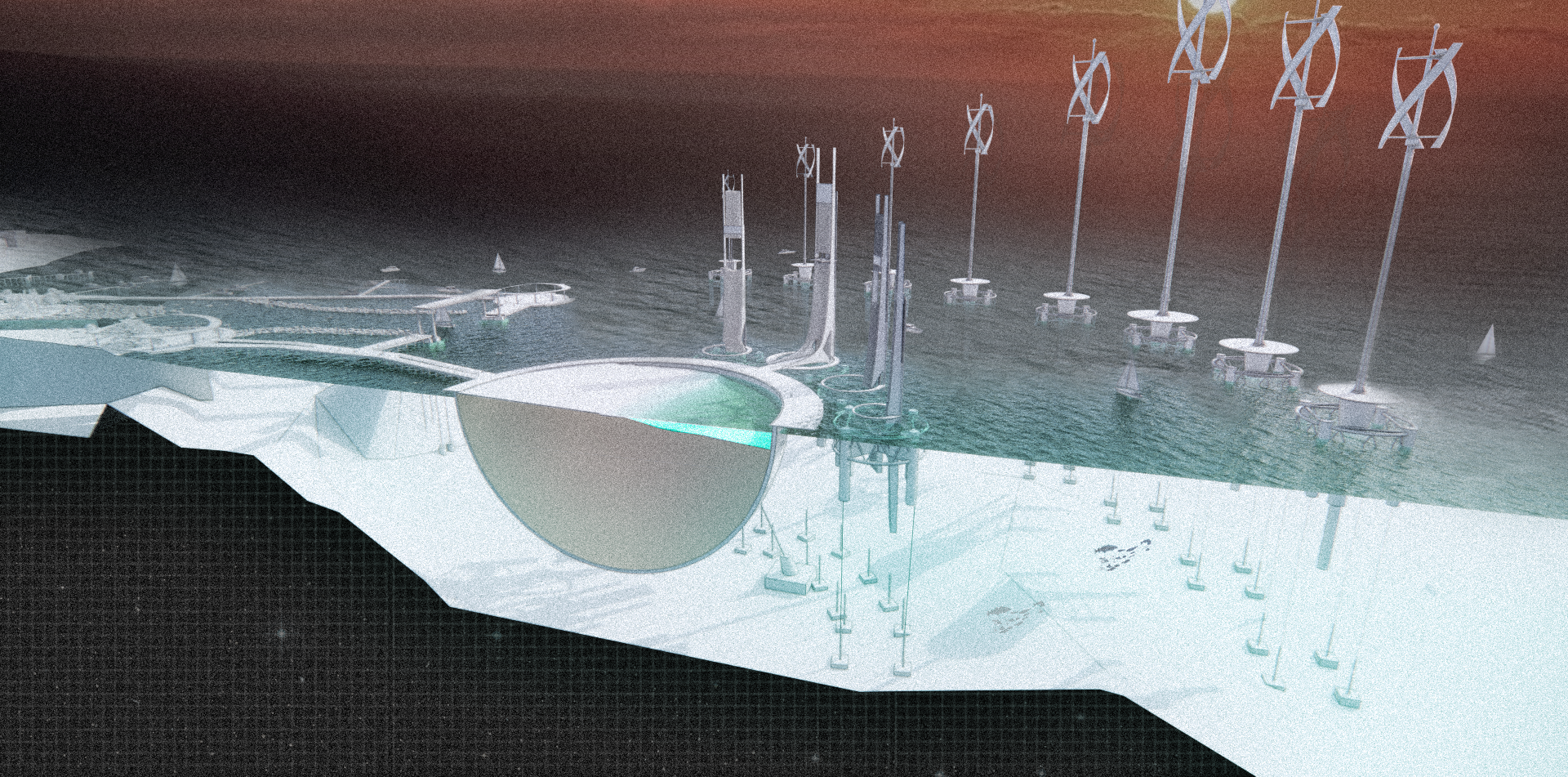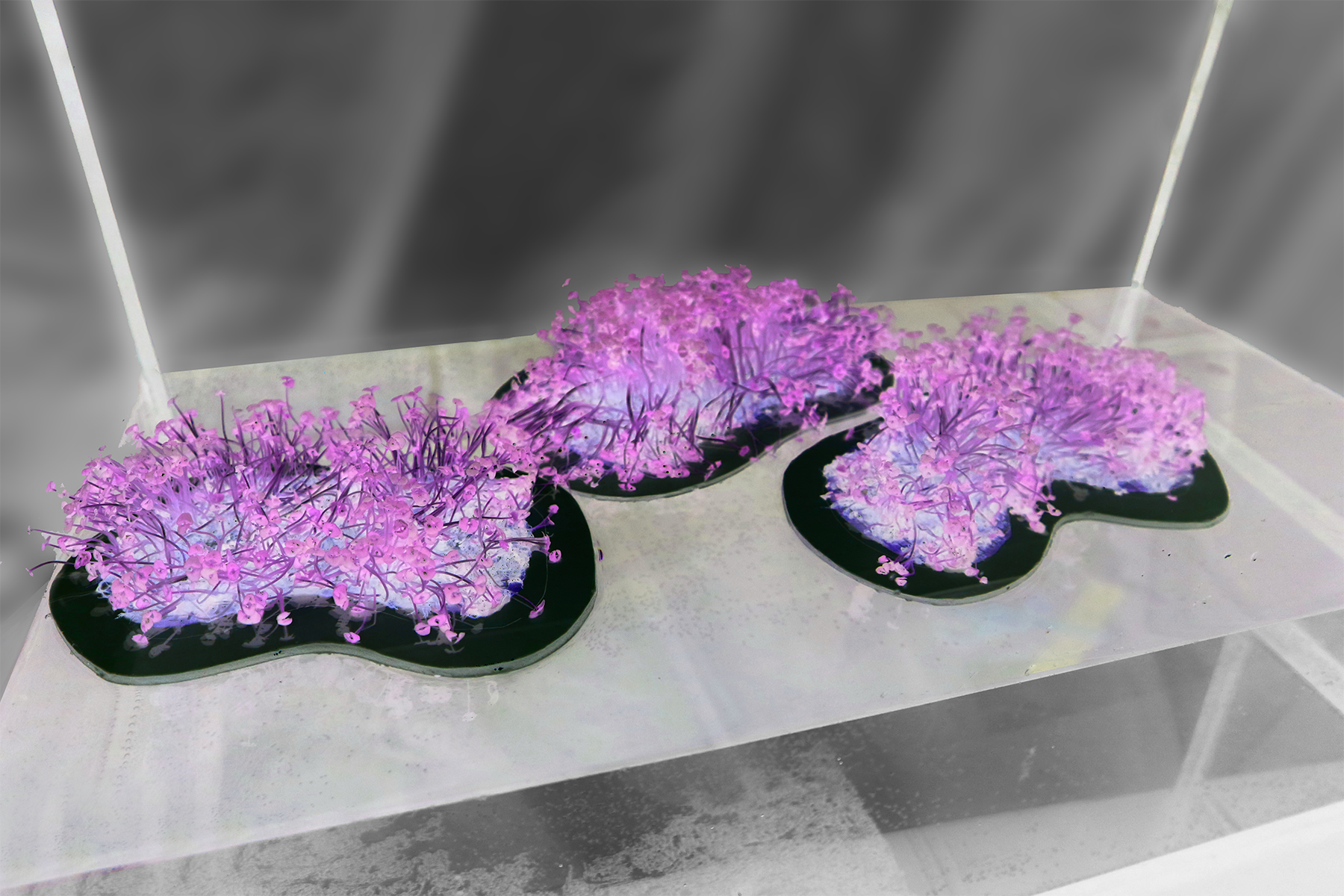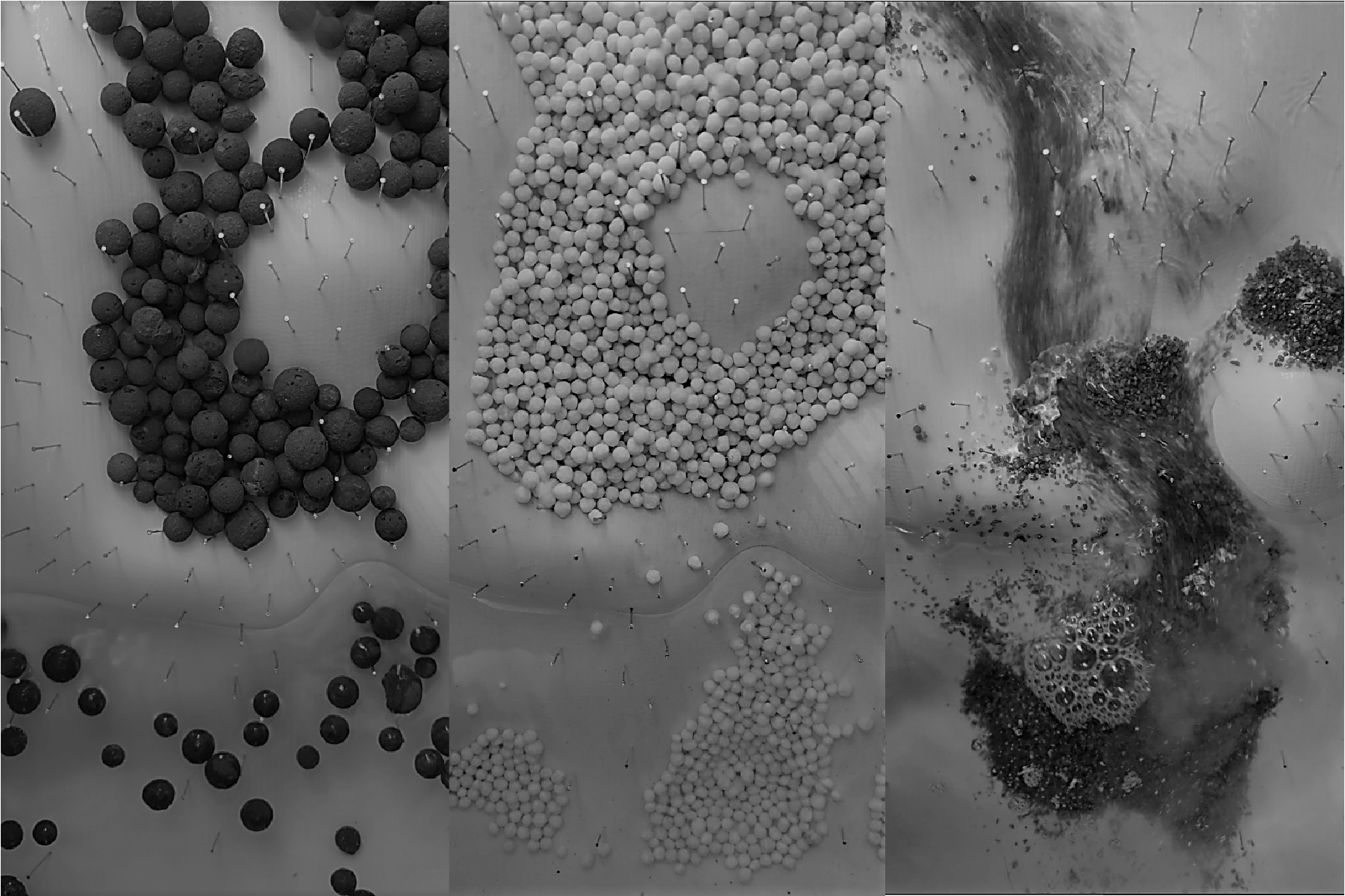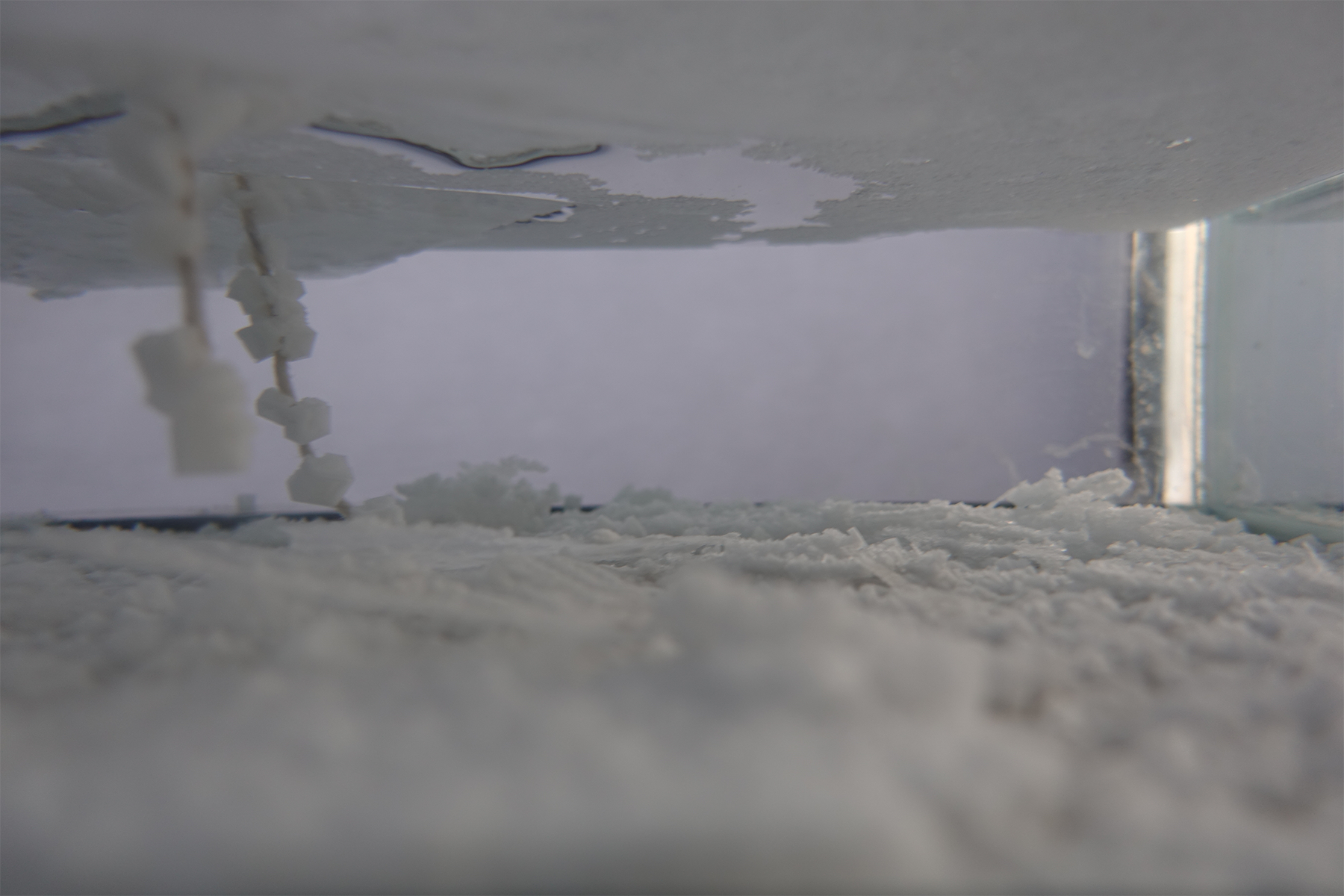Megan Maksymyshyn, Nishant Dave,
Noah Desjardins
Tank Worlds : Port Hope Harbour
Constructed Topographies: An Additive and Subtractive Landscape
This project explores how a series of interventions—both infrastructural and natural—impact erosion, accretion, sedimentation and eventually effect remediation in Port Hope. Erosion, accretion, and sedimentation, while slow and delicate, have large impacts over time on ecology and coastal land use patterns. The project began by investigating these processes through model experiments of material erosion and accretion and continuing with analysis and mapping of sediment settlement patterns along the Port Hope coastline. The harbour impacts sediment distribution at two significant moments: it collects at the termination of the watershed where the Ganaraska River drains in Lake Ontario and it is swept east along the Port Hope shore due to longshore transport. Current infrastructure associated with the harbour breakwater creates a sediment sink at West Beach while the already malnourished East beach deteriorates further as sediment accretes slower than it erodes.
The proposal for Port Hope incorporates a series of architectural interventions that rework existing patterns of sedimentation in the water and extracted, contaminated soil on ground. In the water, a mesh network attached to existing and new occupiable piers enables new plant and animal species to thrive in the water. On land, processes of soil extraction due to contamination are made legible; they are extracted, built up and capped in a visible location to demonstrate magnitude of contamination. Within one void, a new water filtration system is designed as an occupiable landscape. A series of lightweight towers punctuate the site, acting as both station points for observation as well as beacons drawing people in from downtown Port Hope and Lake Ontario. Together the interventions collectively create a productive landscape for a range of human and non-human stakeholders including pedestrians, boaters, swimmers, marine species, terrestrial species and vegetation.

